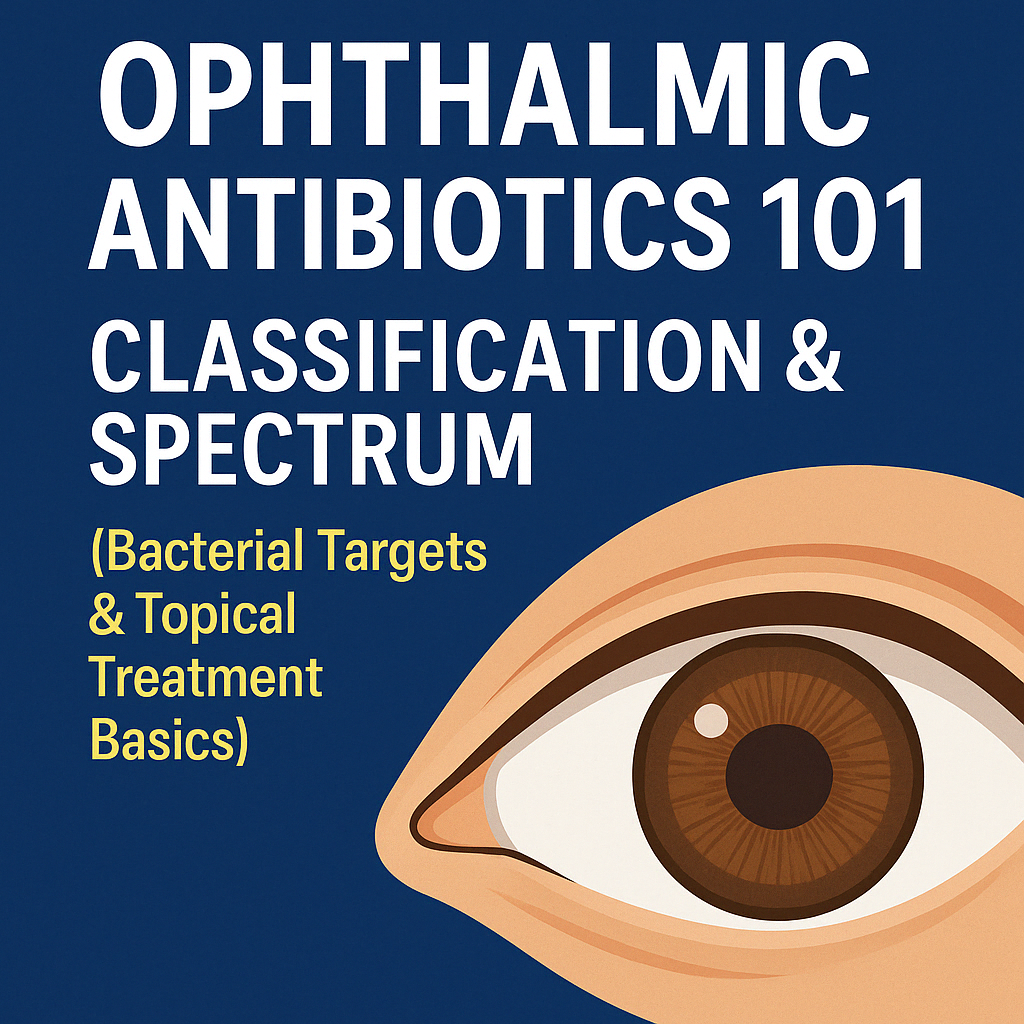Tistoryview
Disease&Treatment/Cornea&Ocular surfaces
Basic concepts of ophthalmic antibiotics used in ophthalmology and classification criteria for antibacterial effects by strain
eye_doc 2025. 4. 21. 17:04👁 Introduction to Ophthalmic Antibiotic Eye Drops – Classification & Spectrum of Action
Even in a healthy body, normal flora exist throughout the digestive tract, skin, and even around the eyes.
In ophthalmology, topical antibiotics are the primary treatment for bacterial infections and prevention in surgical settings.
✅ Routes of Antibiotic Administration
- Systemic (IV or oral)
- Topical (eye drops or ointments)
- Subconjunctival, intracameral, intravitreal injections
→ Topical drops are most commonly used for external eye infections.
✅ Common Bacterial Pathogens
InfectionMajor Pathogens
| Keratitis / Corneal ulcer | S. aureus, Pneumococcus, Pseudomonas |
| Conjunctivitis | S. aureus, Pneumococcus, H. influenzae |
| Endophthalmitis | S. epidermidis, S. aureus, Pneumococcus |
✅ Antibiotic Classification Criteria
- By Bacterial Spectrum
- Anti-Staphylococcal
- Anti-Pneumococcal
- Anti-Pseudomonal
- By Gram Staining
- Gram-positive (purple) vs Gram-negative (red)
→ Influences choice of antibiotic
- Gram-positive (purple) vs Gram-negative (red)


✅ Key Antibiotic Classes in Ophthalmology
ClassPrimary Use
| Quinolones | Broad-spectrum, first-line |
| Aminoglycosides | Effective against Pseudomonas |
| Tetracyclines | Oral use in lid/gland inflammation |
| Macrolides | Pediatric/infant-friendly alternative |
✅ What’s Next?
Each class will be discussed in detail with:
- Mechanism of action
- Trade names in Korea
- Dosage forms and usage tips
- Side effects and contraindications
